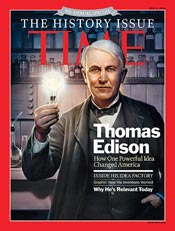Thomas Edison Lightbulb
Historians agree that Thomas Edison was not the inventor of the electric light bulb, but he did produce the first commercially viable one. Earlier light bulbs were experimented with as far back as 1802; and there were 23 others who had invented light bulbs, some of whom were still working on them at the time of Edison’s work.
Three factors in combination are generally recognized as contributing to Edison’s success:
A durable incandescent material
Elimination of air from the bulb-a better vacuum
A filament material of high resistance

Thomas Edison’s serious incandescent light bulb research began in 1878, filing his first patent later that year…”Improvement In Electric Lights” in October 1878. His experiments involved the fabrication and testing of many different metal filaments, including platinum. Platinum was very difficult to work with, and prone to being weakened by heating and oxygen attack.
In addition, platinum was expensive, and too low in resistance; which would require heavy copper conductors in Edison’s electric distribution system he was designing to supply commercial installations of his bulbs. This system would later become the model for our modern electric utility power distribution system of today.
Edison then resorted to a carbon-based, high-resistance, filament. One year later in October 1879 Edison successfully tested a filament that burned for 13.5 hours. Continuing to improve his design, by November 1879, he filed for a U.S. patent for an electric lamp using “a carbon filament or strip coiled and connected … to platina contact wires”. The filament was made from a piece of carbonized thread.

Nice